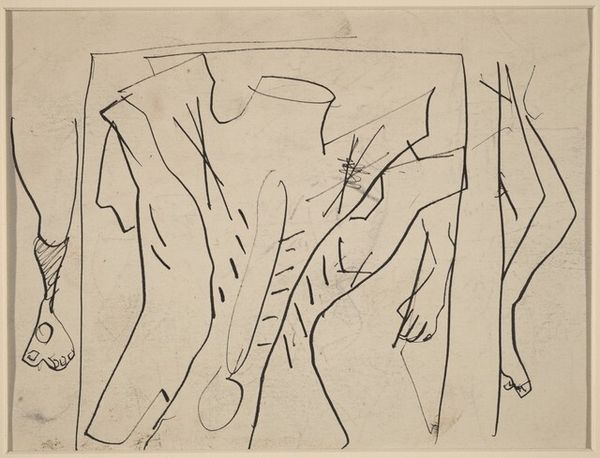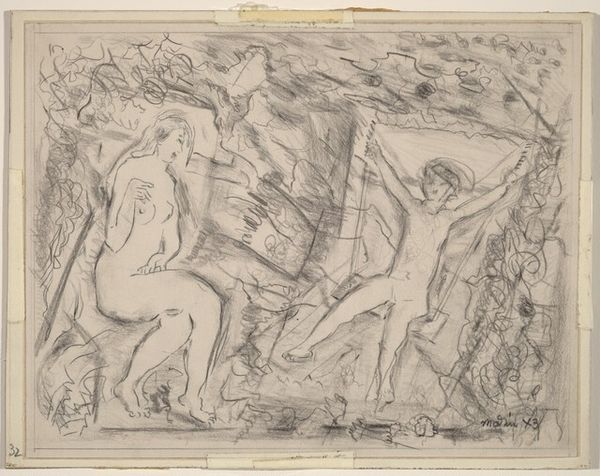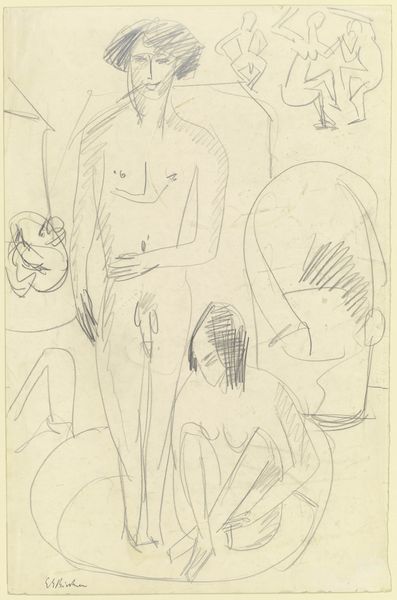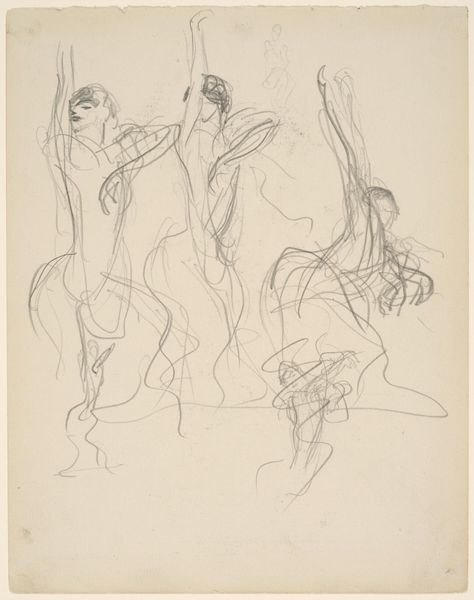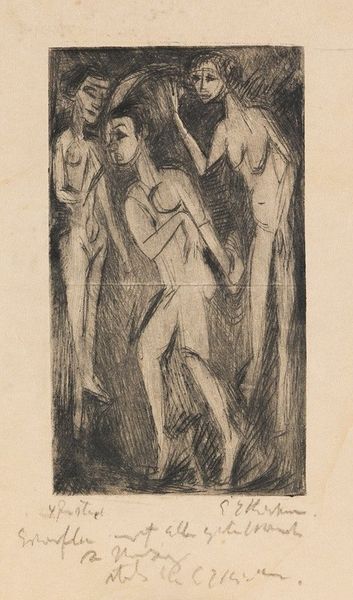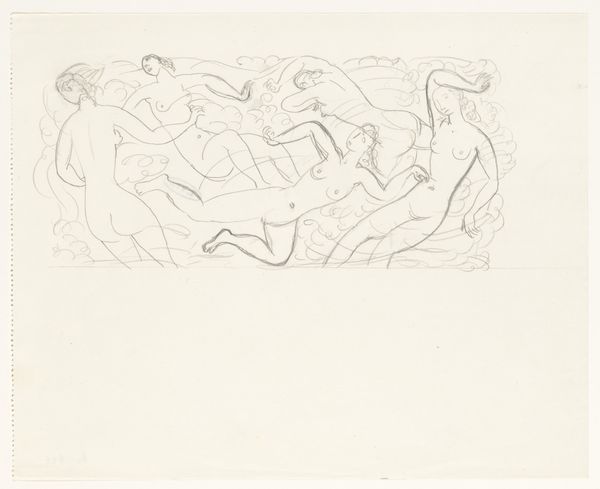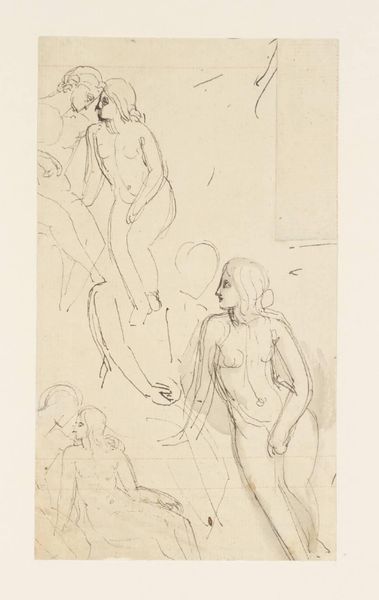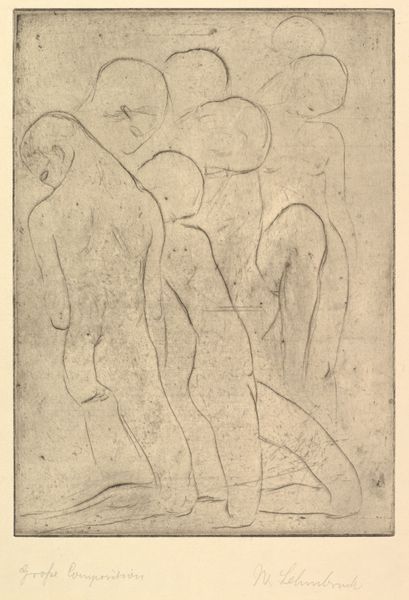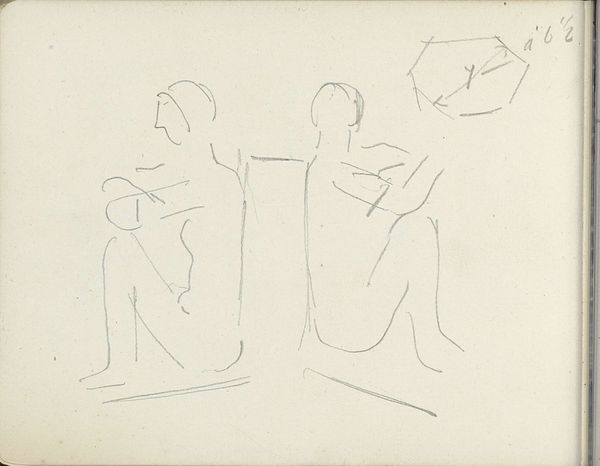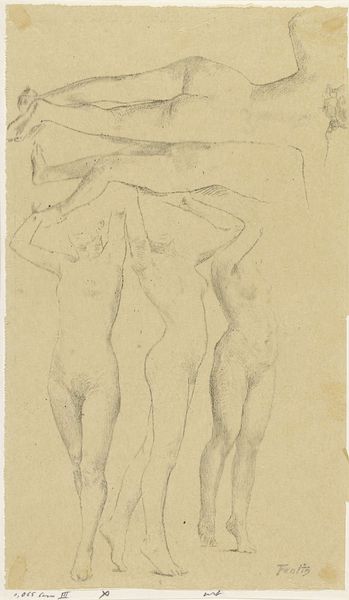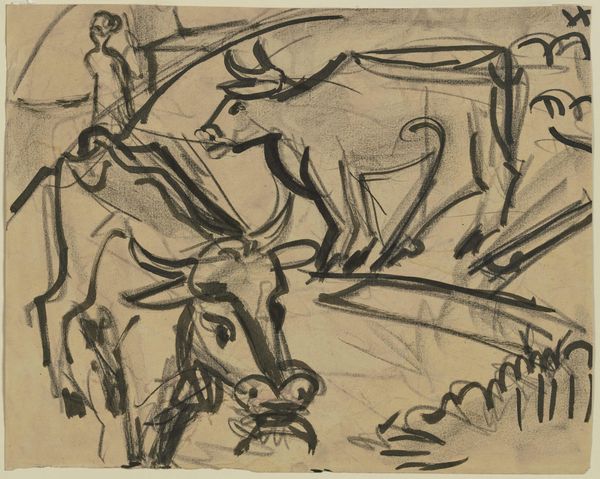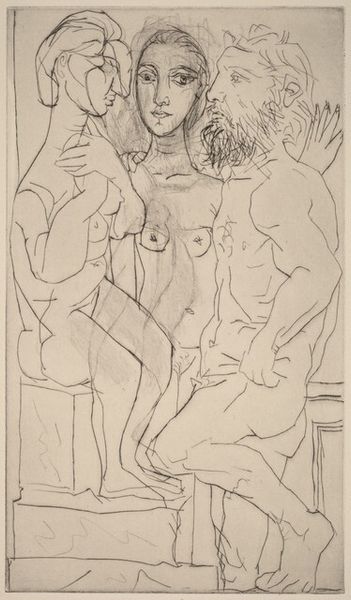
drawing, print, etching, ink
drawing
ink drawing
pen sketch
etching
etching
german-expressionism
figuration
ink line art
ink
line
nude
Copyright: National Gallery of Art: CC0 1.0
Editor: So, here we have Ludwig von Hofmann’s "Composition with Five Nude Figures," rendered as an etching, maybe sometime in the early 20th century, given the German Expressionist vibe. The figures feel both classical and strangely modern in their starkness. What strikes me is how detached they seem, despite being grouped together. What do you see in this piece? Curator: It's fascinating how Hofmann engages with the classical nude but filters it through the anxieties of his time. We see this push and pull between tradition and modernity reflected in how art institutions embraced and sometimes rejected such depictions. How might this grouping reflect contemporary societal structures of power, sexuality, or even homosociality that were both visible and suppressed in early 20th century German culture? Editor: That's a thought-provoking perspective. It almost seems like a statement about alienation amidst a shifting cultural landscape. Are you suggesting Hofmann was consciously engaging with these themes of power and societal norms? Curator: Precisely. Artists don't exist in a vacuum. The rise of modernism coincided with new theories about the body, sexuality, and the public's perception of art. Etchings, like this, were relatively accessible. How might the 'print' medium affect the interpretation or accessibility of these once verboten images by the broader public compared to a unique oil on canvas, for instance? Editor: I guess, in a way, the choice of printmaking makes a statement in itself— democratizing the gaze and opening up dialogues in society beyond the traditional elite art circles. Curator: Exactly. Think about the debates surrounding the nude at the time, and the varying levels of acceptance across different social classes. Considering its historical context, how does viewing it today challenge our own contemporary sensibilities and notions of art and the human form? Editor: I see what you mean; the simplicity and rawness actually become very potent, when viewed through that socio-political lens. Thank you, that was quite insightful. Curator: It’s always enriching to view art through these multiple historical layers. I'm glad we could share our perspectives.
Comments
No comments
Be the first to comment and join the conversation on the ultimate creative platform.
